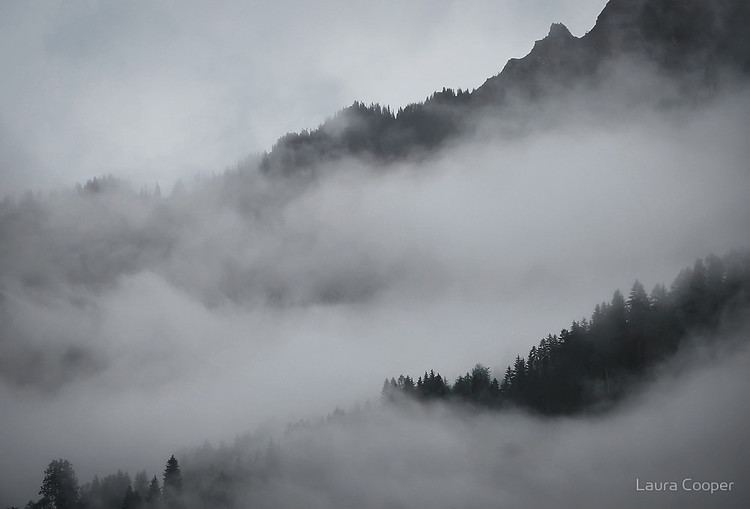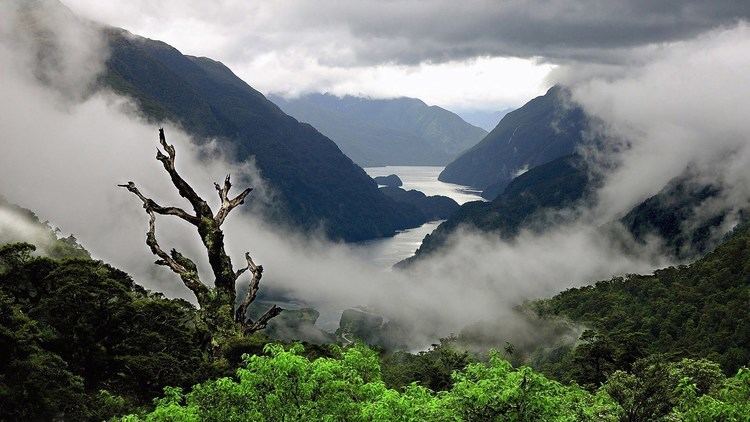Type Mountain range | Founder Morgoth | |
 | ||
Other name(s) Hithaeglir, Towers of Mist Notable locations Caradhras, Eyrie, Goblin-town, Mount Gundabad, Khazad-dûm (Moria), Zirakzigil Location Between Eriador and Wilderland | ||
The misty mountains cold the hobbit
In J. R. R. Tolkien's fantasy world of Middle-earth, the Misty Mountains are an epic mountain range, and one of the most important features of Middle-earth's geography. The mountain-chain is less well known by its alternative names. One of these is Hithaeglir (meaning mist-peak-line in Sindarin, one of the languages invented by Tolkien); this was misspelled as Hithaiglin on the original Lord of the Rings map. Other alternative names are the Mountains of Mist or the Towers of Mist. The range stretched continuously for some 900 miles (1440 kilometres) across the continent of Middle-earth.
Contents
- The misty mountains cold the hobbit
- The hobbit far over the misty mountains cold extended cover
- Geography
- Valleys and rivers
- History
- Third Age
- Inhabitants
- Works cited
- References

The Misty Mountains first appeared in print in Tolkien's 1937 book, The Hobbit. A vision of the mountains is invoked in the first chapter: "Far over the misty mountains cold..."; they are encountered directly in chapter 4. Further information about the mountains was added in Tolkien's subsequent publications.

The hobbit far over the misty mountains cold extended cover
Geography

The Misty Mountains stretched continuously for some 900 miles: from Carn Dûm in the north to Dol Baran in the south, and were a formidable barrier between the large Middle-earth regions of Eriador and Wilderland.

The northernmost section of the Misty Mountains ran from Carn Dûm to Mount Gundabad, and was known as the Mountains of Angmar. Mount Gundabad was where Durin awoke according to legend, though it was later an abode of Orcs. Mount Gram, another Orc nest, was not far away. Mount Gundabad was on the eastern side of the range, where it nearly joined the westernmost extremity of the Grey Mountains. The strategic gap was about 10 miles wide.
The greatest Dwarf realm in Middle-earth, Khazad-dûm, was located at the midpoint of the Misty Mountains. The area's three massive peaks - the Mountains of Moria - were Caradhras (Redhorn and its pass), Celebdil (Silvertine) and Fanuidhol (Cloudyhead). Under Celebdil was the main part of Khazad-dûm; it included the Endless Stair, which the Dwarves built from the foundations of the mountain to its summit.
The southernmost peak of the Misty Mountains was Methedras (end-horn); from here the great range finally subsided into foothills, the last being Dol Baran. Here the southernmost foothills of the Misty Mountains looked across the Gap of Rohan to the northernmost foothills of the White Mountains.
The Misty Mountains had very few passes. The most important of these were the High Pass and the Redhorn Pass; there was also a pass at the source of the Gladden. There were actually two alternative routes in the High Pass; the lower pass was more prone to being blocked by Orcs; hence most travellers used the higher pass, except during those rare interludes when the Orcs were suppressed.
Valleys and rivers
Some of Middle-earth's notable valleys and dales lay in or close to the Misty Mountains:-
Rivers originating in the Misty Mountains (north to south):
History
The Misty Mountains were raised by Melkor (Middle-earth's first Dark Lord) in a primeval epoch of the First Age, no later than the War of the Powers. He hoped to impede Oromë, a god who often rode across Middle-earth hunting. The Mountains were far taller in those days and had a more dreaded appearance.
However Oromë established the High Pass, also called the Pass of Imladris and Cirith Forn en Andrath (S. 'cirith'=pass, 'forn'=north, 'andrath'=long climb). He did this to assist the Eldar to cross the mountains on their Great Journey to the West. Even so, the Misty Mountains were still viewed as too formidable by a large number of the Elves; they forsook the great migration, and dwelt east of the mountains (i.e. in Rhovanion). This was a major sundering of the Elves; the group who remained behind became the Nandor.
Dwarves began to use the High Pass later in the First Age. They connected their roads (the Great East Road and the Men-i-Naugrim through Mirkwood) with this pass, which reinforced it as the major gateway between Eriador and the regions to the east.
The great Dwarf realm of Khazad-dûm had been established beneath the Misty Mountains earlier in the First Age, and flourished for thousands of years, until the unearthing of the Balrog (Durin's Bane) in T.A. 1980. The Dwarves then deserted Khazad-dûm, which then became known as Moria (the Black Pit), and it came to be occupied by Orcs and other creatures.
In the year 3434 of the Second Age, the High Pass was used by the army of Gil-galad and Elendil when they marched east to Mordor in the War of the Last Alliance of Elves and Men. After this war (which ended the Second Age), Isildur was slain by Orcs watching the way back towards the pass.
Third Age
Halflings had begun to migrate west across the Mountains by the year 1050 of the Third Age. They were the ancestors of Hobbits.
By T.A. 1300, the Witch-king established the realm of Angmar at Carn Dûm. He was based there at the northern extreme of the mountains for several centuries.
During this time the Orcs spread through the Misty Mountains, and the High Pass became dangerous again. Only with the War of the Dwarves and Orcs (T.A. 2790-93), which nearly wiped out all Orcs of the mountains, did it become safe again for a while. Nevertheless, by the time of the Quest of Erebor the goblins of Goblin-town had burrowed their way back to the pass, and thus captured Bilbo Baggins and Thorin Oakenshield's company of Dwarves.
The Fellowship of the Ring tried to cross the Redhorn Pass (after rejecting the High Pass leading to Rhovanion as being watched by the Enemy, and the Gap of Rohan as taking the Fellowship too close to Isengard), but a blizzard forced the companions to go under the Misty Mountains instead of over them. There, in the subterranean realm of Moria, the Nine Walkers unexpectedly encountered the Balrog, Durin's Bane. Gandalf fell with the Balrog into the uttermost depths of Moria and fought the Balrog all the way up the Endless Stair, finally slaying it by throwing it from the peak of Celebdil, but sacrificing his own life in doing so.
Inhabitants
Eagles had eyries in the Mountains from the earliest times. It was also anciently the habitat of great bears, who were said to be the ancestors of Beorn. Stone-giants (also called mountain giants) were another race that inhabited the outside of the mountains. Sometimes, because of their size, a stone-giant could be mistaken for the side of the mountain itself; at times these creatures could reach heights of forty feet tall. The only surviving report of stone-giants was made by Bilbo and the thirteen Dwarves, as told in the Red Book of Westmarch in the chapter "Over Hill and Under Hill."
Various races made their homes underneath the Misty Mountains. The Dwarf realm of Moria flourished from the First Age well into the Third. In the early Second Age, escapees from the War of Wrath established subterranean lairs: Orcs (e.g. at Goblin-town, Gundabad) and (as far as is known) one Balrog (under Moria). The Balrog was destroyed by Gandalf the Grey in T.A. 3019.
Gollum, a key character of the Third Age of the legendarium, was fascinated with the Misty Mountains as a youngster. When exiled from his original home, he followed an unnamed stream into the Mountains, and lived underneath them for over five centuries. His home there was an island in an underground lake near Goblin-town. With him resided the One Ring.
